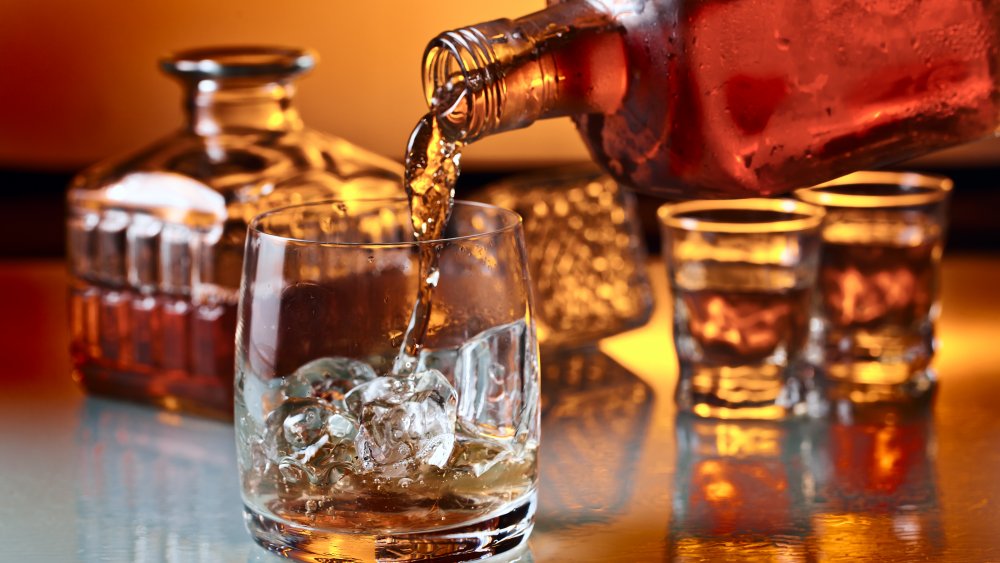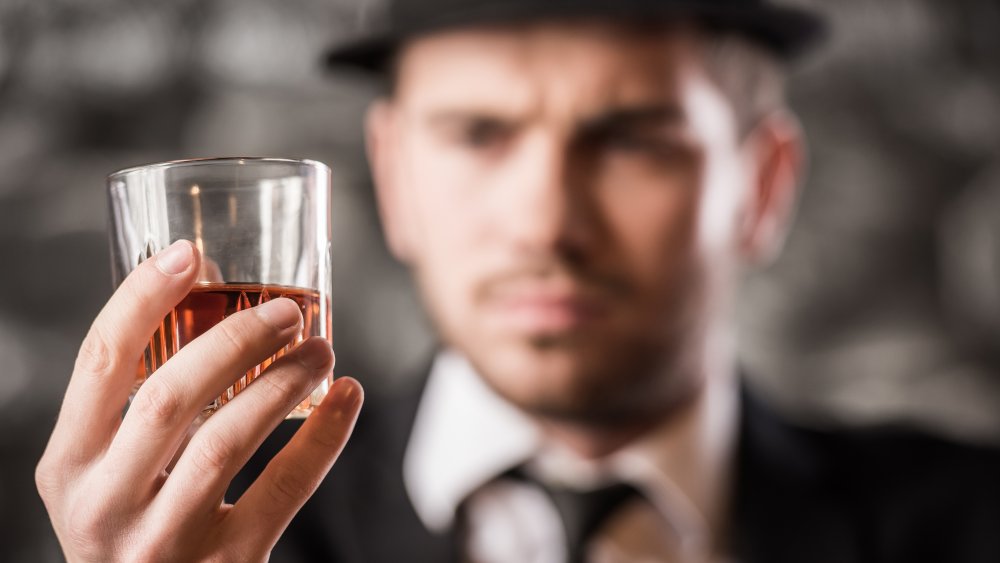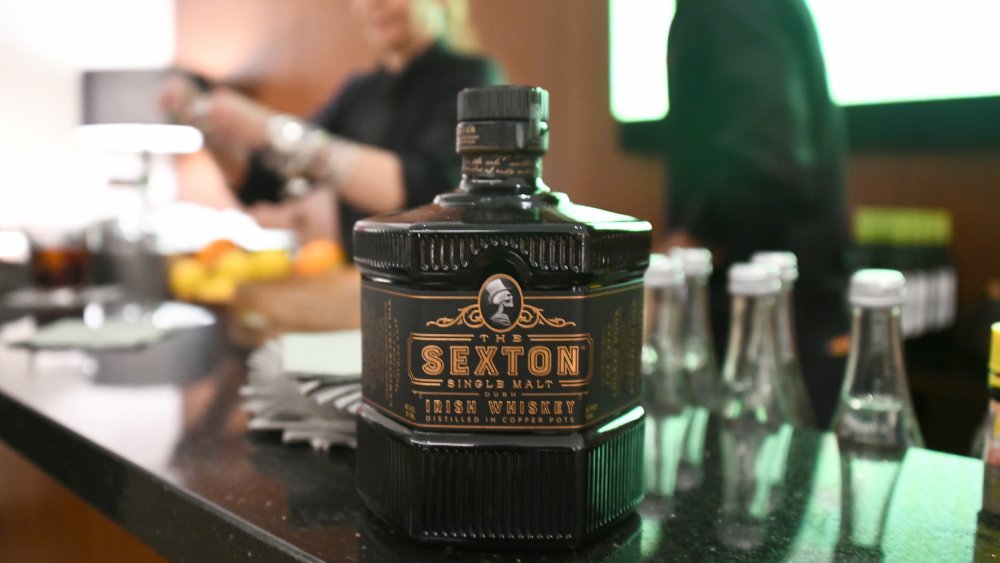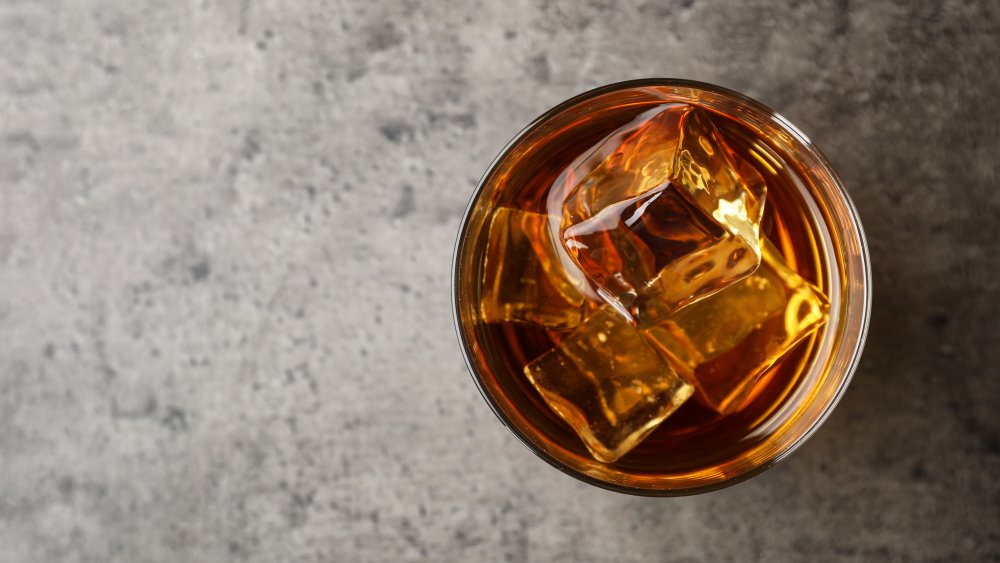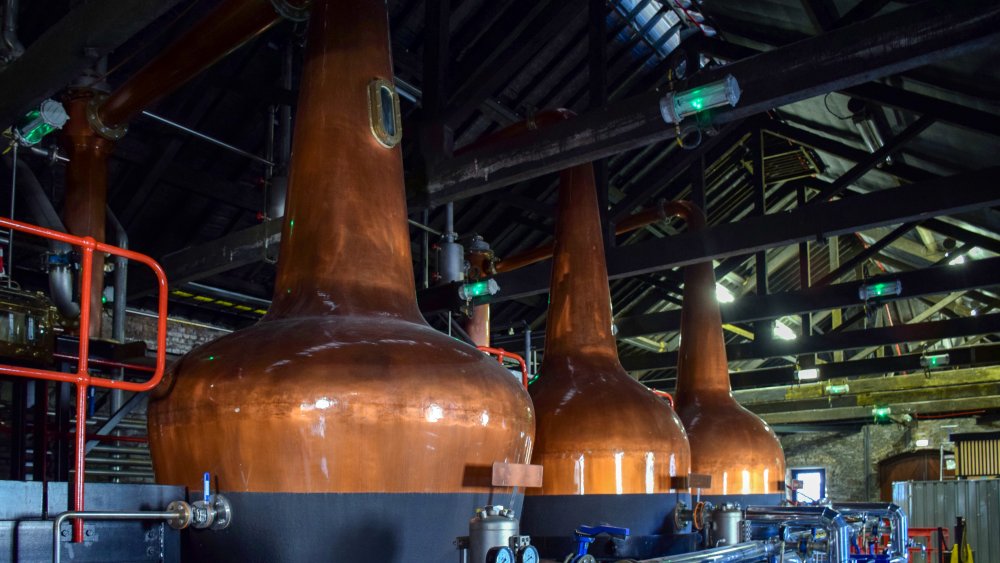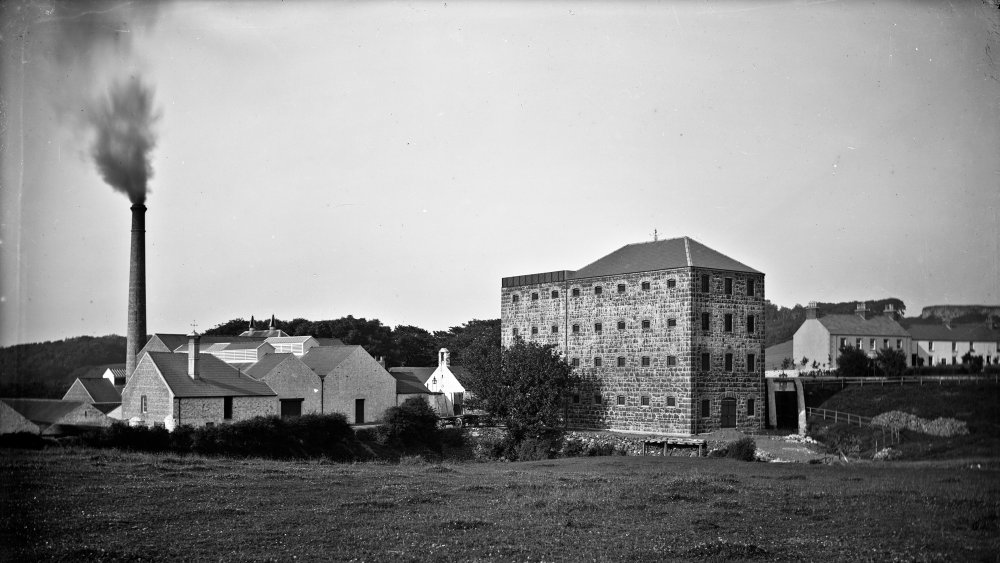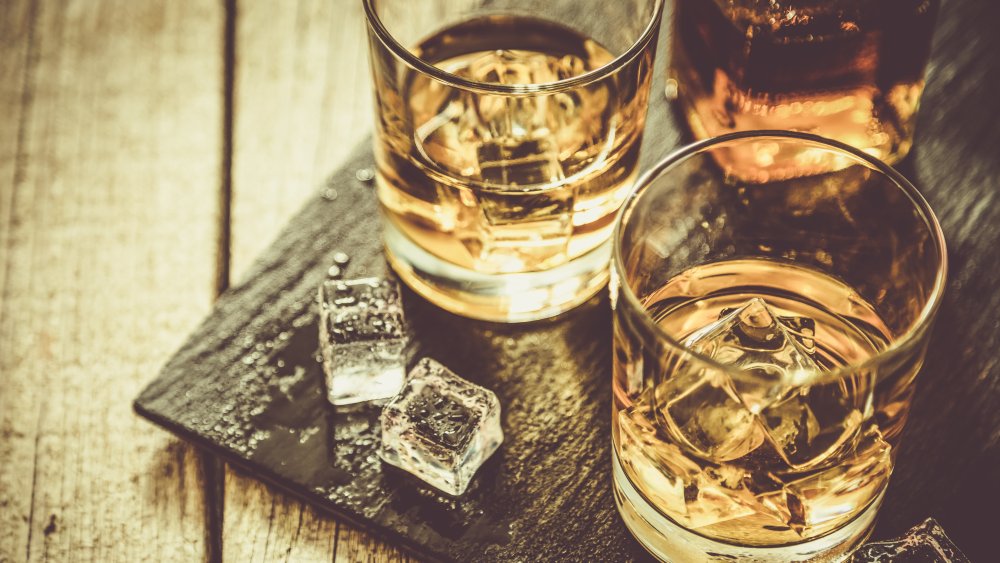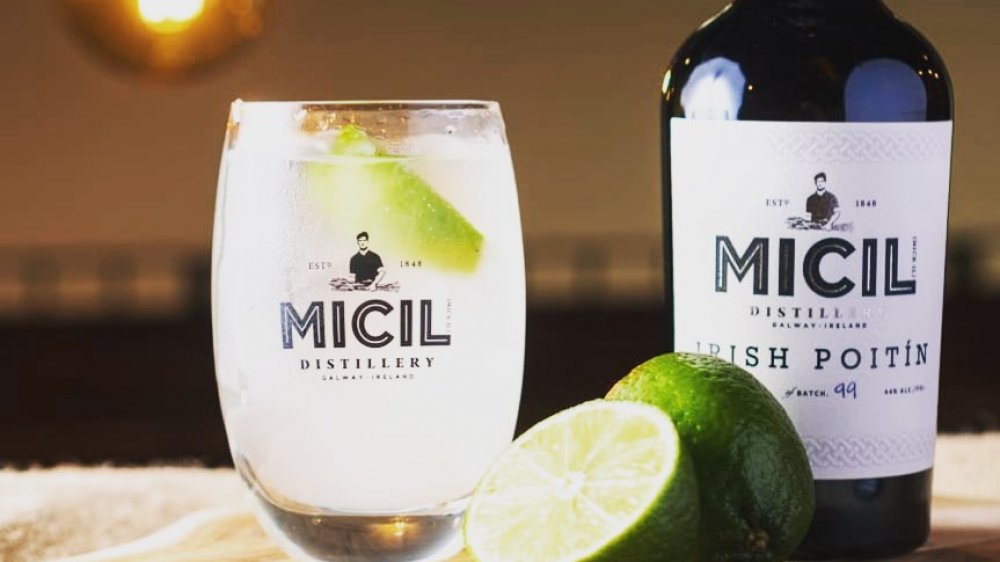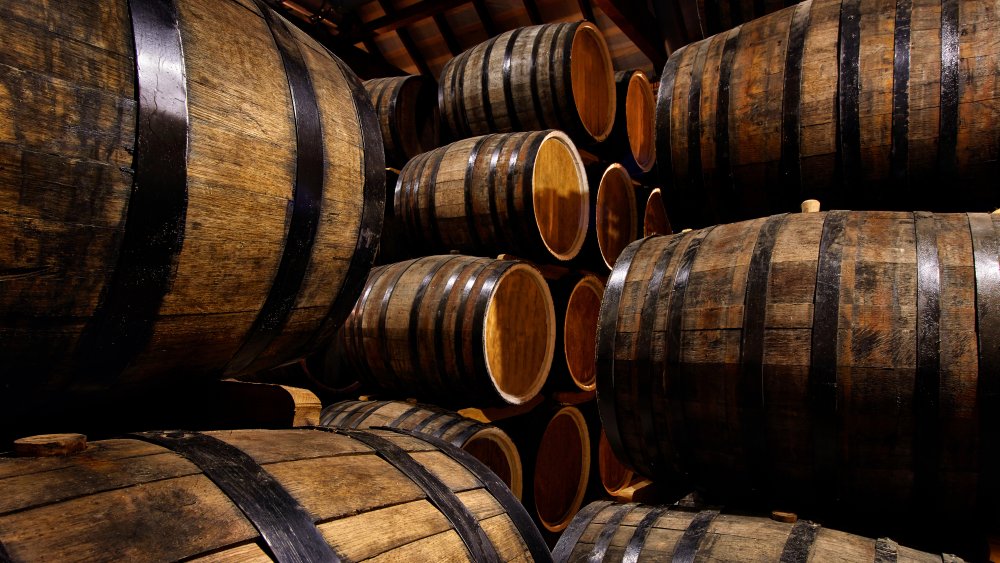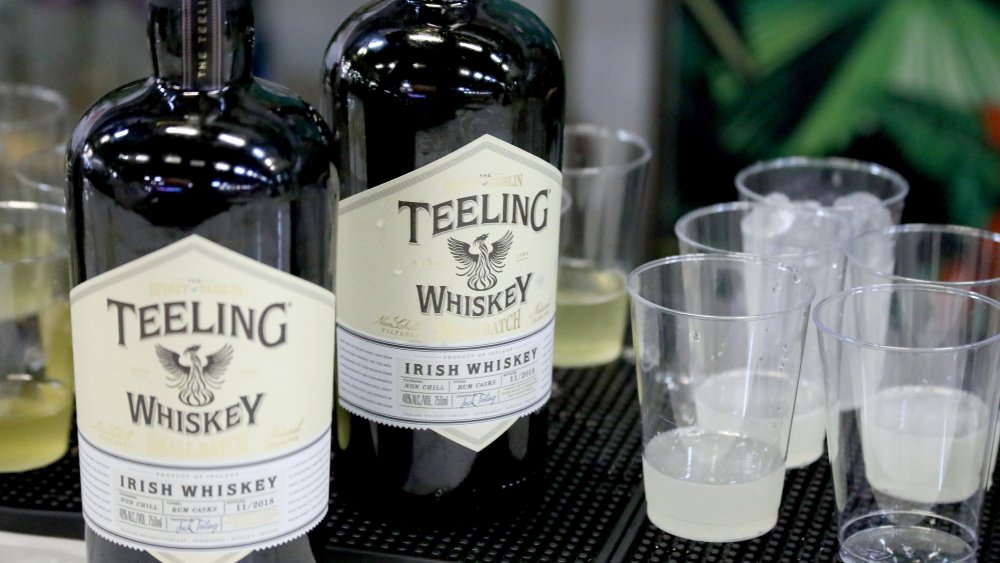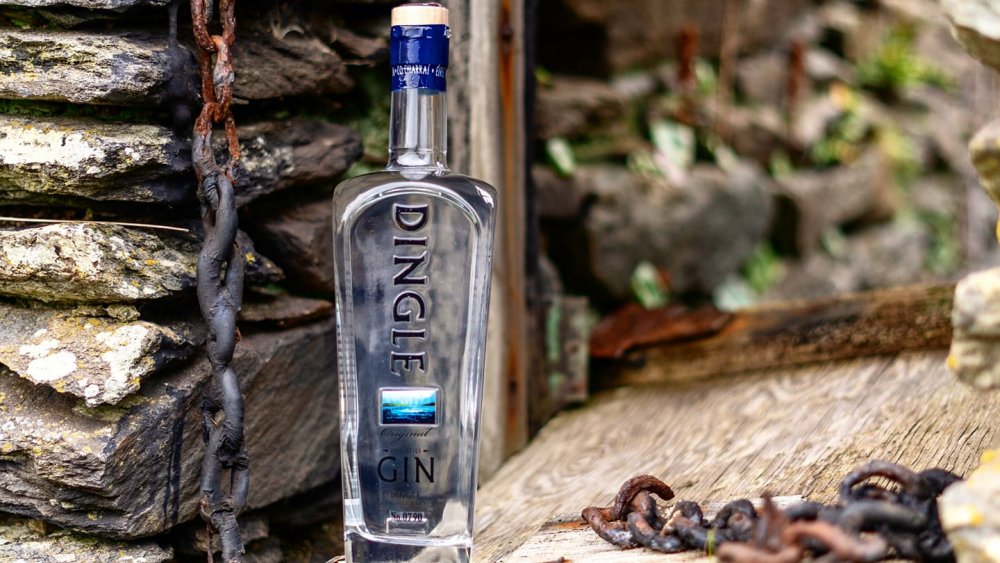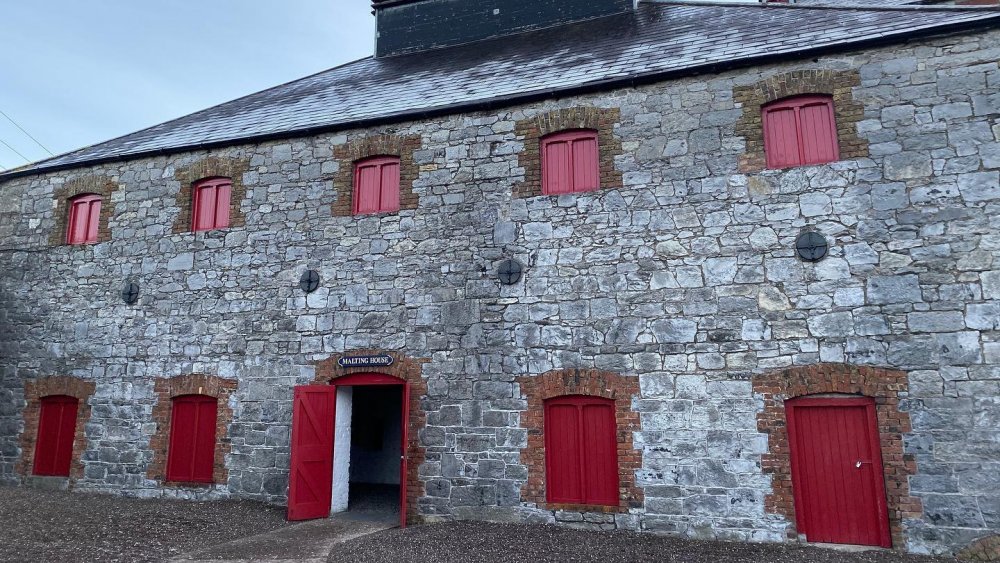The Untold Truth Of Irish Whiskey
Irish whiskey may be the drink of choice for many on Saint Patrick's Day — the day in which it's believed everyone's at least a little bit Irish. Celebrating your "Irish" roots means partaking in one of the Emerald Isle's oldest traditions, and Irish whiskey? Well, it's right up there — and it's older than you might think.
Surprisingly, Irish whiskey has had something of a tumultuous history. Sure, it's always been around, but there were times when, well, it almost wasn't. The industry has nearly disappeared more than once, but there's good news: Each time, it has been saved by devoted distillers determined to keep this ancient art alive.
Irish whiskey has been a part of Irish tradition and culture for centuries and in the 21st century, it's experiencing a rebirth and resurgence unlike any to date. That means it doesn't have to be Saint Paddy's day for it to be the perfect time to learn a little bit about Irish whiskey and the history behind it. Here are some tales you can share while enjoying the water of life.
What makes Irish whiskey, well, Irish whiskey?
Ireland and Scotland are both known for their whiskey production, but Scottish whisky and Irish whiskey are two entirely different beasts. According to Flaviar, one of the biggest differences comes down to how they're distilled. While Scottish distilleries typically distill their product twice, Irish whiskey is usually distilled three times, although there are some exceptions to that rule too. Although these recipes may sound very technical, you'll be able to easily tell the difference between the two varieties. Put them next to each other and you'll see the triple-distilled whiskey will be much lighter, much smoother, and much easier to drink.
There are some other guidelines when it comes to Scottish versus Irish whiskey. Whisky Advocate explained that in order to be considered Irish whiskey, the spirit needs to be made either in the Republic of Irelalend or Northern Ireland, it must include malted barley, be mashed, fermented, and distilled to an ABV (alcohol by volume) of no more than 94.8 percent. It also must be matured in wooden casks for at least three years, contain no additives except for water and caramel coloring, and be no less than 40 percent ABV when bottled.
Irish whiskey: E or no e?
Sometimes it's "whiskey" and sometimes it's "whisky," so what's the difference? According to Forbes, everyone up until the late 1800s pretty much spelled the word without the "e" — even Irish distillers, who almost all include the "e" these days. But when laws changed and Scottish distillers were suddenly allowed to blend grain whiskey and single malts to create something much like their Irish counterparts were making, the major distilleries in Ireland basically banded together and decided they wanted to make it very clear they were making a product that was entirely different from what was coming out of Scotland. Hence, they added the "e."
But here's the thing: Some types of Irish whiskey are spelled without the "e." Take Waterford Whisky, for example. The distillery chose to go without the "e" because "whisky" is an older variant that goes back to the original Gaelic term for everyone's favorite spirit. That term, uisce beatha (pronounced ish-ka beh-ha), translates to "water of life."
Although the norm may be to include the "e" in referencing Irish whiskey, the European Union's Department of Agriculture, Food and the Marine recognizes both variants.
No one really knows when Irish whiskey was first developed
Irish whiskey is incredibly old — so old, in fact, that no one's really sure when it was first developed. There's an oft-told tale that suggests it was Saint Patrick himself who introduced the process of distillation and whiskey to Ireland but — as great a story as that is — Forbes revealed it's just not true. How do we know? Saint Patrick lived in Roman Britain during the fifth century — and there's no indication whatsoever that whiskey-making was a thing at that point and place in time. Wine would have been the drink of choice.
Historians say it's more likely that knowledge of the distillation process was passed along through traveling Christian monks a few centuries after Saint Patrick's time. These monks, according to Aleteia, would have started out in warmer climates as master wine-makers, but once they started getting into less hospitable areas, they would have needed to find another way to make spirits. Enter: distillation.
That's not the only theory, though. According to Whisky Magazine, proof that the ancient Celts were making whiskey in "pre-Christian times" was found etched into preserved reindeer skins discovered along Dublin's River Liffey in the form of a diary-like entry. This could be true, but the earliest, concrete written evidence we have of whiskey consumption dates back to 1170.
This is how a unique style of Irish whiskey came to be
You've probably seen the term "single pot still" on the labels of some bottles of whiskey, so here's a fun fact: Much like it's not true champagne unless it's made in the Champagne region of France, single pot still whiskey must come from Ireland. This, of course, means it's Irish whiskey. More specifically, though, it's a style of Irish whiskey.
There are laws in place that state exactly what it has to be: made from at least 30 percent malted barley, 30 percent unmalted barley, and it has to be made in Ireland in a copper pot still (like the ones pictured). And, in true Irish fashion, the entire thing came about thanks to a dash of rebellious spirit.
According to The Whiskey Trail, taxes on malted barley were increased in an effort to curb drunkenness in the year 1785. When malted barley suddenly got much more expensive, though, the distillers didn't give up; they began using unmalted barley and started making their whiskey in pot stills in order to avoid skyrocketing fees. Pretty brilliant, right?
So, can you taste the difference in the final product? Yes, says the Irish Whiskey Museum. Irish pot still whiskey has a different texture because when it's being distilled, it captures an oiliness from the barley. That, in turn, leads to a much, much smoother final product. Also, the combination of malted and unmalted barley means pot still whiskey tends to have distinctly spicy notes.
The oldest licensed whiskey distillery in the world is in Ireland
When someone says that whiskey has been a part of Irish culture for a long time, they're not kidding. Bushmills is actually the oldest licensed whiskey distillery in the world and it is located in Ireland. The label's Irish whiskey is still made in its original distillery and was established in 1608. For a little context, here's what was going on around that time: In the decades surrounding Bushmills' founding, Queen Elizabeth died and was succeeded by James I, Pocahontas saved John Smith from execution, Henry Hudson discovered the Hudson River, Galileo and Johannes Kepler made impressive astronomical advancements, and in 1616, William Shakespeare died (via Oxford Reference).
Yes, Bushmills was around at the same time Shakespeare was — and that puts things in perspective, doesn't it? Bushmills' name is a blend of the local water source, the River Bush, and the mills that grind their grain. Although fire destroyed a lot of the original distillery in 1885, they're still in the same place and you can absolutely go visit them the next time you take a trip across the pond.
Irish whiskey distilleries were almost entirely wiped out
Considering how popular Irish whiskey has been for so long, it may surprise you that there're not more long-lived brands out there. The reason for that actually dates back to King Henry VIII.
Before his rule, England didn't really have a leg to stand on when it came to Ireland, Nephin Whiskey. But after Henry VIII declared himself the head of his own religion, the Irish, along with their refusal to switch religions, became a big deal. Over the next few centuries, England decided to find every possible way to control the Irish, while the Irish were finding every way in which they could resist. One such way was with — you guessed it — whiskey.
More and more laws were added to the books governing the production and distribution of Irish whiskey and, bit by bit, more distillers were finding themselves suddenly deemed illegal operations. By 1779, distillers' fees were based on how much they could theoretically make, not how much they actually sold, and in 1783, fines for disobeying whiskey laws were expanded. At that point, it wasn't just the distiller who would pay, but the entire community. One by one, whiskey distilleries started to close and by the end of the 18th century, the number of legal whiskey operations had dropped from 1,200 to just 20.
Poitín: the moonshine version of Irish whiskey
When Irish whiskey distilleries were starting to become obsolete in the late 18th century, some distillers decided to thwart the suffocating taxes and operate illegally. Enter: poitín, which is pronounced pu-cheen, by the way. We've all heard the stories of how moonshiners took to the hills of America to make their own illegal hooch during the Prohibition; poitín is essentially the Irish moonshine.
The poitín men would set up stills in remote areas of the country and make their own version of whiskey, which was, of course, a major target for the authorities, according to Nephin Whiskey. The revenue department even had an armed division of men who were tasked with finding the stills, which some poitín distillers took full advantage of. When their equipment would wear out or break, they'd report the location to the authorities. Then, they'd collect the reward money for turning in an illegal still and buy new equipment with the cash.
According to Nephin Whiskey, this war on homegrown whiskey was serious. Armed conflicts were common and often deadly. Poitín was outright illegal from 1661 all the way up until 1997, Culture Trip reported, although it was very literally all over Ireland. If you're curious to try it, you can. Some Irish whiskey distilleries still make it — in a more legal capacity than the good ol' days, of course.
American Prohibition almost destroyed the Irish whiskey industry
For being such a big deal in both Ireland and abroad, the Irish whiskey industry has seen some serious ups and downs, especially during World War I and the American Prohibition.
Ireland has been sending Irish whiskey to the United States since a shipment of Jameson hit American shores in 1869, but during World War I, merchant ships crossing the Atlantic were prime targets. According to Carol Quinn, archivist for Midleton Distillery, the war nearly ended exports to the U.S., and hot on the heels of the war came Prohibition. And this was a huge problem for a few reasons.
First, of course, was that exports of Irish whiskey into the U.S. pretty much stopped, save the bootleggers who were willing to run bottles in from surrounding territories. But something else happened, too. When moonshiners started making their own version of Irish whiskey (poitín), it was, well, pretty bad. They wanted to charge a premium for it, though, so they started calling it "Irish whiskey." People already expected to pay a lot for Irish whiskey and for many, this was the first taste of it they got. That did some lasting damage to the image of Irish whiskey and those that thought they sampled it during Prohibition era had no desire to have any more once Prohibition ended.
This distillery broke Dublin's 125-year Irish whiskey dry spell
Visit Dublin and you'll undoubtedly find yourself heading into an old part of the city called The Liberties as it's the home of Guinness' St. James's Gate brewery. The brewery was built in 1759, and the timing is no coincidence. Throughout the 18th and 19th centuries, The Liberties was the beating heart of the city's brewing and distilling operations. In addition to Guinness, many businesses, like Jameson and Powers, called The Liberties home. In fact, the entire area was filled with malthouses, mills, and so many other distilleries it was nicknamed the Golden Triangle.
But that golden age of alcohol production wasn't to last, historian Sheila Renehan explained to The Washington Post. The Liberties went from having 35 working distilleries (and as many breweries) to none, as the industry struggled and struggled. Even the big three — Jameson, Powers, and Roe — packed up and moved away, leaving Dublin with no whiskey-making facilities. That is, until 2015, when Jack and Stephen Teeling opened their new distillery, Teeling, just a stone's throw from where their family's original distillery of the same name, which was founded in 1782, once stood.
"The Teeling Whiskey Distillery today is the first new distillery in Dublin for over 125 years," the company revealed. And that whiskey is good, too. Between 2015 and 2020, Teeling has taken home more than 250 awards for their whiskey.
The Irish whiskey market has had an unexpectedly pleasant consequence
Irish whiskey is making a huge comeback. In 2013, there were just four whiskey distilleries in all of Ireland. But by 2018, the Irish Whiskey Museum revealed there were 18 up and running and plans for even more in the works. But, there is a catch. You know that in order for Irish whiskey to be Irish whiskey, it has to age for a minimum of three years. So, what are these places doing in the meantime to keep the doors open and the lights on? Apparently, they're making other spirits that don't need to be aged.
According to The University Times, many newly-started whiskey distilleries are filling those lean years by selling vodka and gin. And some have given these Irish whiskey distilleries some serious kudos for making other spirits. Take Dingle, for example. In 2015, The Journal talked to Dingle whiskey distillery founders to see how they were keeping afloat until they were ready to sell whiskey.
Although distilling gin and vodka was essentially just a means to an end, The Irish Times reported in 2019 that Dingle Gin beat more than 400 competitors to take the top prize at the World Gin Awards. Sure, they're producing Irish whiskey now, too, but who's going to complain about some incredible gin making it to market — all thanks to whiskey's long maturation process.
There's Irish whiskey and then there's unicorn whiskey
According to Flaviar, distilleries have come and gone for centuries. Post-World War II, there was a brief Irish whiskey boom, which led to the opening of a number of new distilleries. That boom didn't last, though. Many of the distilleries that came to be in the 1960s and 1970s ended up going out of business by the '80s and never reopened.
These days, such establishments are called "silent distilleries" — and not only are they still standing, but there's actually still whiskey aging behind their closed doors. Sometimes, these ultra-aged, ultra-rare bottles show up on the market, and they're worth a small fortune. In 2014, Diageo, who owns the silent distillery Brora, released a limited edition, 40-year-old whiskey. The price? Nearly £7,000.
According to Wallpaper, Midleton is getting in on the action, too. In 2020, they announced their Very Rare Silent Collection: six bottles of whiskey, all between 45 and 50 years old, all from the mothballed Old Midleton Distillery (pictured above). The distillery has been closed since 1975 and these so-called "unicorn whiskeys" will be the very last bottles to come out of that distillery. They're so rare that not only would you have to have a spare $40,000 to afford just one bottle, but you'd need to enter into a lottery in order to even make a purchase.
This is the right way to drink and enjoy Irish whiskey
If you're thinking about that burn that comes with some spirits or the idea that you're going to need to mix Irish whiskey into something to hide that harshness, we have some news for you. Because of the triple distillation process that Irish whiskey goes through, you're not actually going to get that harsh burn you might expect. Irish whiskey is very, very good just on its own! If you're unsure which kind you should buy, London Spirits Competition noted that Irish whiskeys that tout "silky" and "smooth" descriptors on their labels are a good place to start.
Now, for the fun part: how to drink it. You can absolutely drink it neat, which is to say, just pour it in a glass and room temperature and enjoy. It's that smooth! You can opt for some ice, too, or — if you're not entirely certain how strong it's going to be or if you're trying to introduce it to someone who's not yet a whiskey fan, Men's Journal recommended combining a mixture of half water, half whiskey. There's actually another benefit to that than just mellowing the taste; it'll bring out aromas in the whiskey you wouldn't notice if you were drinking it straight. You can eventually reduce the amount of water — or not. For some true, Irish-style drinking, throw in some good friends, some music, and some craic. Sláinte!
